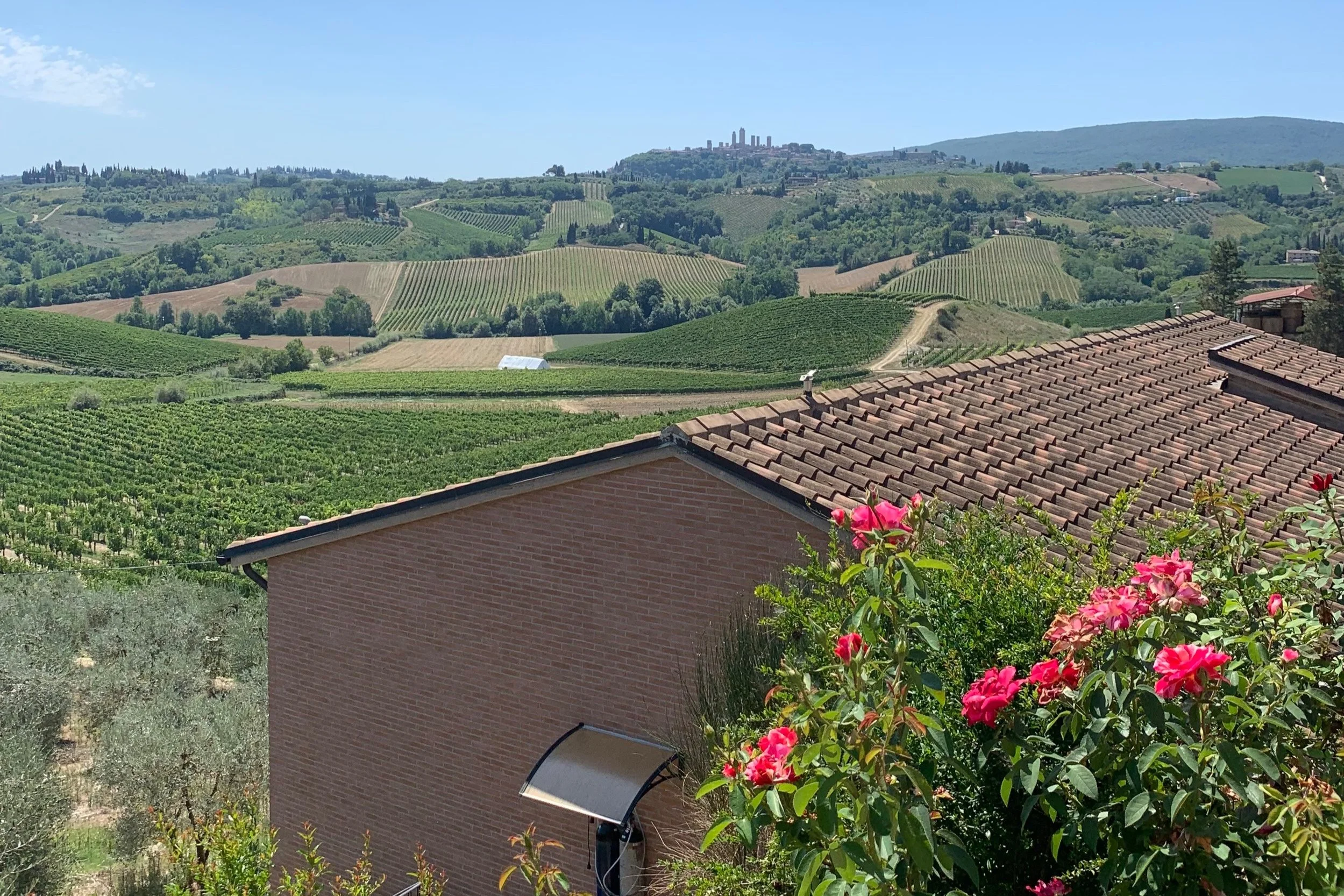Spring Awakens: A Time for Sustainable Travel
*Some of the links in this post are affiliate links, meaning I may earn a commission if you book or buy through them. For more information, check out our full disclosure page.
Spring is a season of renewal—wildflowers bloom, forests come back to life, and the air carries that unmistakable energy of change. It’s a time when the world feels fresh, full of color and possibility. So it's the perfect time to set out on an adventure! But with travel comes responsibility: to explore in a way that preserves the very places we love to visit.
That’s where sustainable travel comes in.
What is sustainable travel?
At its core, sustainable travel is about minimizing our impact on the environment and local communities while supporting conservation efforts and ethical tourism. It’s about choosing experiences that protect wildlife, reduce waste, and ensure that future generations can enjoy these destinations just as we do today.
Spring, in particular, is a season where responsible travel choices matter most. Delicate ecosystems are emerging from dormancy, seasonal wildlife patterns are shifting, and some destinations are more susceptible to over-tourism as travelers flock to popular spring hotspots.
So how can we embrace the beauty of spring while being mindful travelers? Over the years, I’ve realized that traveling consciously doesn’t take away from the experience—it enriches it. The more intentional we are about where we stay, how we get around, and what we bring, the more deeply we connect with the places we visit.
From choosing eco-friendly accommodations to supporting local businesses and minimizing waste, small choices add up. Here’s how we can explore spring’s top destinations in a way that not only protects the planet but also gives back to the people who call these places home.
1. Choosing Eco-Friendly Transportation
Spring is one of the best seasons to embrace slower, greener travel. One of the easiest ways to reduce your carbon footprint is by choosing direct flights whenever possible, as takeoffs and landings contribute the most to fuel emissions. And once you arrive, consider taking trains, buses, or car-sharing services instead of short-haul flights. Many European cities, like Vienna and Seville, have excellent rail systems that make getting around both sustainable and scenic—and, in many cases, far more enjoyable than navigating traffic.
For spring road trips through places like the Blue Ridge Parkway or Banff National Park, a fuel-efficient hybrid is a smart choice. Planning your route carefully and using eco-driving techniques—like reducing idling and maintaining steady speeds—helps minimize fuel consumption while maximizing the adventure.
And when exploring a city? Walking or biking isn’t just a greener alternative—it’s often the best way to stumble upon hidden gems. One of my favorite travel moments was wandering through Rome’s quiet backstreets and unexpectedly finding a small, family-run restaurant. Their artichoke dish was one of the best I’ve ever eaten, and I would have never found it had I not taken the time to explore on foot.
Sustainability doesn’t have to mean sacrificing adventure—if anything, it deepens the experience.
Slow down and soak in the journey—traveling by train offers a scenic, sustainable way to explore the world with a lighter footprint.
2. Pack Light & Choose Sustainable Travel Gear
There’s something freeing about packing light—not only does it make travel easier, but it also reduces waste and fuel consumption. Every extra pound on a plane or in a car adds up, so bringing only what’s needed is an easy way to travel more sustainably.
When choosing travel gear, opt for eco-friendly materials—from luggage made of recycled plastics to lightweight sustainable backpacks for your daily adventures.
Some must-haves that always make it into my bag:
A reusable water bottle & insulated mug – Essential for cutting down on plastic waste and perfect for grabbing coffee or tea on the go. (Bonus: Some cafés even give discounts for bringing your own cup!)
Sustainable Travel Essentials – Eco-friendly laundry detergent sheets, dissolvable hand soap paper, and a compact travel water flosser help reduce waste while keeping you fresh on the go. Plus, they’re TSA-friendly and easy to pack!
A lightweight, sustainable daypack – Designed for comfort on long days of exploring and made with recycled materials for a more eco-friendly choice.
I’ve noticed that a few small swaps like these make a big difference over time, and they’ve quickly become second nature when packing for a trip.
3. Stay in Green Accommodations
Many hotels and lodges are embracing sustainability, from using renewable energy to reducing single-use plastics. When booking, look for eco-certified stays or accommodations that prioritize local sourcing, water conservation, and energy efficiency.
Stay at Eco-Conscious Farm Stays & Lodges – In rural destinations, agriturismos (farm stays) offer a unique way to connect with the land while staying in sustainable properties that focus on local sourcing and conservation. Many even provide farm-to-table meals straight from their own land.
Choose Low-Impact Lodges in Nature – National parks and outdoor destinations often have eco-friendly lodges designed to blend into the landscape rather than disrupt it. Look for accommodations that follow Leave No Trace principles, prioritize renewable energy, or contribute to local conservation efforts.
Opt for Sustainable City Stays – In urban destinations, consider hotels with LEED certification or strong environmental policies, such as those using solar power, water conservation systems, or robust recycling programs. Many major cities now have hotels committed to reducing their footprint without sacrificing comfort.
It’s amazing how many beautiful and unique stays are also committed to protecting the environment.
4. Support Local & Sustainable Dining
Spring is the perfect season to experience a destination through its fresh, seasonal ingredients. Choosing farm-to-table restaurants, local food markets, and sustainable seafood options not only enhances the experience but also supports the local community and reduces the environmental impact of imported goods.
For me, food is one of the best ways to connect with a place, and some of my most memorable meals have come from small, family-run spots where everything is fresh and locally sourced. Instead of dining at big international chains, I always seek out hidden-gem eateries, street vendors, and organic cafés—the kinds of places where you can taste the region’s flavors and maybe even hear the stories behind the recipes.
Shop Local for Fresh, Seasonal Ingredients – Visiting open-air markets is a great way to enjoy fresh produce, artisanal cheeses, and baked goods while supporting local farmers and reducing food miles. Perfect for a picnic or a taste of the region’s flavors.
Choose Restaurants That Prioritize Sustainable Sourcing – Whether it’s seafood, farm-to-table dining, or locally raised meats, opting for eateries that source responsibly helps protect ecosystems and supports small producers.
Seek Out Seasonal, Low-Waste Cuisine – Many traditional food cultures emphasize seasonality and minimal waste, from kaiseki dining in Japan to regional specialties in Europe and beyond. Choosing these meals ensures fresher flavors and a more sustainable food experience.
Stumbled upon a tiny Roman trattoria and discovered the most incredible Carciofi alla Giudia—golden, crispy, and as beautiful as it was delicious.
5. Choose Eco-Friendly Activities & Ethical Tours
One of the easiest ways to travel more sustainably is by choosing experiences that give back rather than take away. Opt for small-group, low-impact tours that prioritize conservation, cultural respect, and responsible tourism. Many national parks and coastal destinations offer wildlife conservation programs, guided eco-hikes, and sustainable adventure tours designed to protect the environment while allowing travelers to engage meaningfully with the places they visit. Traveling this way doesn’t just lessen our impact—it deepens our connection to the world around us.
Choose Low-Impact Transportation & Trails – Opt for electric boats, biking, or walking tours in destinations where they’re available, and always stick to designated trails when hiking to help preserve fragile ecosystems.
Embrace Slow Travel – Instead of rushing through tourist-heavy activities, look for immersive experiences like vineyard walks, farm visits, or local cooking classes that support small businesses and offer a deeper cultural connection.
Seek Out Conservation-Focused Experiences – Whether it’s a wildlife sanctuary, a responsible eco-tour, or a sustainability-focused dining experience, choosing experiences that give back helps protect the places we love for future generations.
A meal always tastes better when you’ve walked the land it came from—this Tuscan farm tour was a perfect blend of good food, good company, and a deeper connection to the earth.
Final Thoughts: Small Changes, Big Impact
The truth is, sustainable travel isn’t about being perfect (or giving up comfort or adventure)—it’s about being mindful. It’s choosing the better option when possible, whether that’s bringing a reusable water bottle, staying in eco-friendly hotels, or choosing experiences that support conservation.
By making small, conscious choices, we not only protect the destinations we love but also deepen our connection to them.
So let’s wander wisely this spring, making sure the beauty we chase today is still there for the travelers of tomorrow.
What’s one sustainable swap you’ve made while traveling? Drop a comment and let’s share ideas!
Travel Well,





